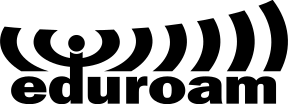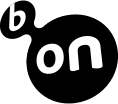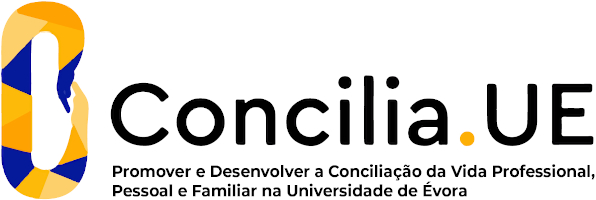2024
Human Biology
Name: Human Biology
Code: BIO12414L
6 ECTS
Duration: 15 weeks/156 hours
Scientific Area:
Biological Sciences
Teaching languages: Portuguese
Languages of tutoring support: Portuguese, English
Regime de Frequência: Presencial
Presentation
This course aims to understand the human being in a biological perspective: his taxonomic framework, his evolutionary history, the polymorphisms of current populations and some of the current health issues.
Sustainable Development Goals
Learning Goals
This course aims to raise awareness:
1. The Primate order.;
2.The human evolutionary process.; environmental and genetic factors involved in this process and in
present human diversity; introduce students in the most controversial issues in human evolution, such as
the evolution of bipedalism, increased brain volume and the origin and dispersal of anatomically modern
humans; and provide general knowledge about the anatomy of human skeletal tissues. Ecological
framework of human biodiversity.
3. Pathologies Some of the most relevant public health of current human populations.
4. Address current environmental pathologies and the policy of the 3Rs.
1. The Primate order.;
2.The human evolutionary process.; environmental and genetic factors involved in this process and in
present human diversity; introduce students in the most controversial issues in human evolution, such as
the evolution of bipedalism, increased brain volume and the origin and dispersal of anatomically modern
humans; and provide general knowledge about the anatomy of human skeletal tissues. Ecological
framework of human biodiversity.
3. Pathologies Some of the most relevant public health of current human populations.
4. Address current environmental pathologies and the policy of the 3Rs.
Contents
Primatology: Man as a primate. Biogeography of primates: comparative anatomy of locomotion and
dentition. Social and behavioral structures.
Human Evolution: hominoids, hominids and hominins. The bipedalism. The genus Homo. Our species.
Current populations and polymorphisms.
Cellular homeostasis, cell cycle, signaling and cellular interactions, cell adhesion and communication, extracellular matrix; cell death, stress and cellular adaptation; carcinogenesis and cancer.
Stem cells: the concept, embryonic and adult stem cells, stem cell types. Cloning: types of cloning.
Blood: Elements in the mammalian blood.
Pathology and Environment: The evolution of human demography; Environmental exposure; Chemicals in the natural and built environment. Evolution of diseases of environmental etiology.
The policy of the 3Rs and Alternative Models:
1.Humane science and responsible use of animals;2.Principle of the 3Rs;3.Implementation and Regulatory Agencies;4.Alternative species:Zebra fish, water flea.
dentition. Social and behavioral structures.
Human Evolution: hominoids, hominids and hominins. The bipedalism. The genus Homo. Our species.
Current populations and polymorphisms.
Cellular homeostasis, cell cycle, signaling and cellular interactions, cell adhesion and communication, extracellular matrix; cell death, stress and cellular adaptation; carcinogenesis and cancer.
Stem cells: the concept, embryonic and adult stem cells, stem cell types. Cloning: types of cloning.
Blood: Elements in the mammalian blood.
Pathology and Environment: The evolution of human demography; Environmental exposure; Chemicals in the natural and built environment. Evolution of diseases of environmental etiology.
The policy of the 3Rs and Alternative Models:
1.Humane science and responsible use of animals;2.Principle of the 3Rs;3.Implementation and Regulatory Agencies;4.Alternative species:Zebra fish, water flea.
Teaching Methods
Theoretical classes with exposition of the syllabus.
Theoretical-practical classes and seminars with the observation of skeletons and casts of various non-human and human primates (current and fossil groups).
Use of video material for some content followed by a debate with students.
Reading and analysis of scientific articles on evolution and human biology.
Whenever possible, study visits will be carried out to observe primates and to the Pathological Anatomy Laboratory of Hospital do Espírito Santo, Évora, to observe the processing and analysis of tissues in oncology.
Maintenance of the Moodle page, where the support materials for the program contents will be placed.
The assessment consists of written tests (two tests or exam of normal and recourse period), with a weighting coefficient of 80% in the final grade and a presentation and discussion of a group work with a weighting coefficient of 20% in the final grade.
Theoretical-practical classes and seminars with the observation of skeletons and casts of various non-human and human primates (current and fossil groups).
Use of video material for some content followed by a debate with students.
Reading and analysis of scientific articles on evolution and human biology.
Whenever possible, study visits will be carried out to observe primates and to the Pathological Anatomy Laboratory of Hospital do Espírito Santo, Évora, to observe the processing and analysis of tissues in oncology.
Maintenance of the Moodle page, where the support materials for the program contents will be placed.
The assessment consists of written tests (two tests or exam of normal and recourse period), with a weighting coefficient of 80% in the final grade and a presentation and discussion of a group work with a weighting coefficient of 20% in the final grade.





















